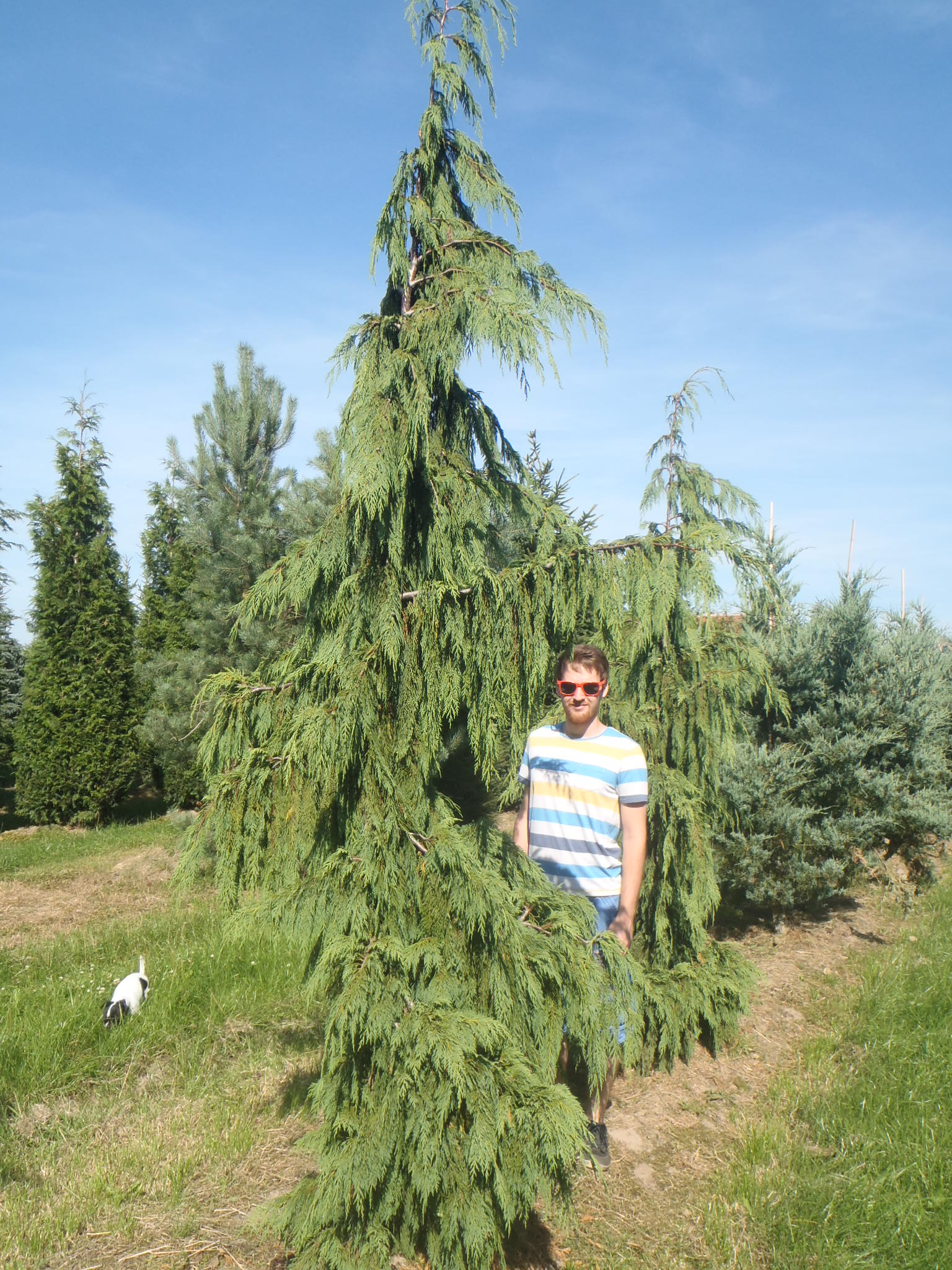

#Weeping nootka cypress trees full
The best place for planting cypress trees is in full sun to partial shade and loamy, well-draining soil.

Plant small or dwarf cypress trees, such as dwarf Hinoki cypress or dwarf lemon cypress, in a front or backyard as a low-maintenance privacy hedge, evergreen screen, or specimen tree. You will often see Florida’s cypress trees growing in the everglades, with their large swollen trunk bases surrounded by water. The native Florida cypress trees are deciduous conifers that grow in swampy areas. Two types of cypress trees grow throughout Florida-the pond cypress and bald cypress. The pond cypress and bald cypress are native to the swampy areas of Florida You’ll find conifers from the plant genera Cupressus, Chamaecyparis, and Taxodium. This article will look at the various features of many trees with the common name cypress. The Hinoki cypress ( Chamaecyparis obtusa) and Lawson Cypress ( Chamaecyparis lawsoniana) are other false cypress varieties. The bald cypress ( Taxodium distichum) and Pond Cypress ( Taxodium ascendens) are examples of false cypresses. Cypress trees such as the Monterey cypress ( Cupressus macrocarpa) are large trees that grow in the Northern Hemisphere.įalse cypress trees are conifers that have the common name cypress but are not in the Cupressus genus. True cypress trees belong to the coniferous plant genus Cupressus. Along with descriptions, pictures of these conifer species will help identify various cypress varieties. This article is a guide to the different types of cypress trees. However, they are not from the cypress genus Cupressus. True cypress trees have soft, feathery evergreen foliage and produce cones that look like large acorns.įalse cypress trees are evergreen and deciduous coniferous trees that also have the common name cypress. This is a selection of a native North American species.Email Pinterest Facebook Twitter LinkedinĬypress trees are coniferous trees in the cypress family Cupressaceae. Consider applying a thick mulch around the root zone in winter to protect it in exposed locations or colder microclimates. It is quite intolerant of urban pollution, therefore inner city or urban streetside plantings are best avoided, and will benefit from being planted in a relatively sheltered location. It is not particular as to soil type or pH.

It prefers to grow in average to moist conditions, and shouldn't be allowed to dry out. This tree does best in full sun to partial shade. It grows at a medium rate, and under ideal conditions can be expected to live for 70 years or more. It has a low canopy with a typical clearance of 1 foot from the ground, and is suitable for planting under power lines. It has no significant negative characteristics.īlue Weeping Nootka Cypress is recommended for the following landscape applications īlue Weeping Nootka Cypress will grow to be about 25 feet tall at maturity, with a spread of 12 feet. When pruning is necessary, it is recommended to only trim back the new growth of the current season, other than to remove any dieback. This is a relatively low maintenance tree. Its average texture blends into the landscape, but can be balanced by one or two finer or coarser trees or shrubs for an effective composition. The shaggy antique red bark adds an interesting dimension to the landscape.īlue Weeping Nootka Cypress is an open evergreen tree with a strong central leader and a rounded form and gracefully weeping branches. The scale-like sprays of foliage remain powder blue throughout the winter. Other Names: Alaska Cedar, Nootka Falsecypress, XanthocyparisĪ graceful, delicately weeping tree with pendulous branches and sprays of delightful blue foliage, more so than the species a colorful accent tree for the home landscapeīlue Weeping Nootka Cypress is primarily valued in the landscape for its highly ornamental weeping form.


 0 kommentar(er)
0 kommentar(er)
